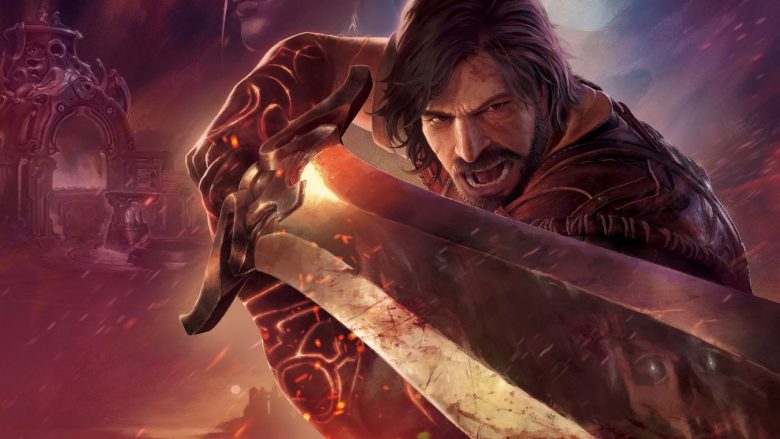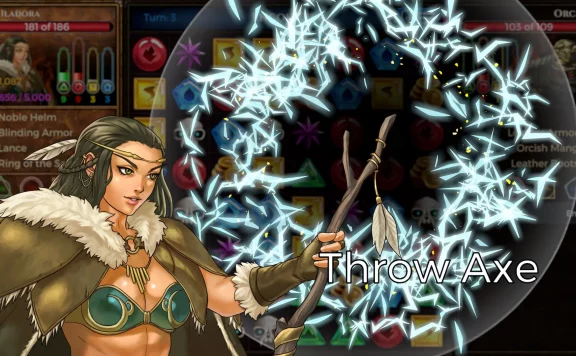One thing an action-adventure game needs above all else is conflict. The story needs stakes, the higher the better, to motivate the protagonist and, by extension, the player. We want to know we’re saving something worth saving, from a threat that no one else can stand up to, because we are the Hero. The central conceit in Blades of Fire fails to stoke quite the same flame in my belly. In it, an evil queen has cast a spell that has turned all steel to stone, and because only her soldiers still wield it, she has managed to dominate the realm. What I can’t quite understand is why. Iron still exists, as do other metals like copper and gold. Steel, after all, is just an alloy, so presumably it would need to be forged before it turns to stone. Also, not for nothing, the protagonist of Blades of Fire is Aran de Lira, a hulking brick shit-house of a man who could probably do as much damage with a sturdy piece of wood, or possibly his bare hands dipped in treacle, as with a steel hammer.
Regardless, after being passed one of the seven legendary hammers that shaped the world by a dying old man, Aran sets out with the old man’s charge, Adso, to kill the queen. It’s hard to shake the feeling that there’s a chunk of story missing somewhere right away. Aran just takes the hammer and can instantly use it to forge steel weapons immune to the queen’s curse, hinting that he may have a complex past. Which indeed he does, as we see later, but it’s at odds with how little he seems to actually know. He’s not the quickest of cats, and often it’s Adso who takes notes on enemies and spouts exposition whenever Aran’s brain hits a roadblock.
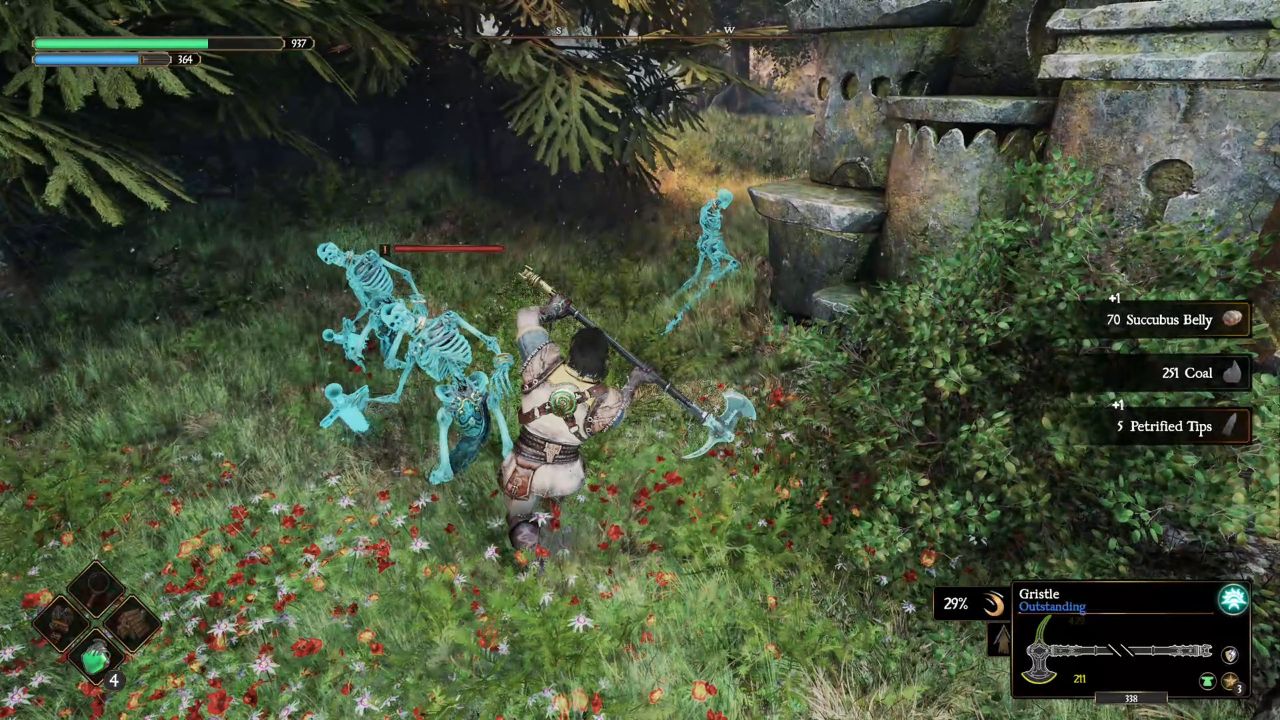
Despite being dressed like he’s cosplaying a character from a completely different game, Adso is pretty useful as a chronicler, keeping a codex of enemies that he adds to as he observes Aran fighting them. It’s a neat way to fill out a bestiary, even if the constant back and forth during fights is repeated ad nauseum. In fact, Blades of Fire has a problem with repeated dialogue throughout. Every time you touch a ladder or climb a rope Adso makes one of the same three jokes about Aran’s age or weight, which is likely supposed to contribute to the chemistry between them but just makes me grind my teeth every time. There’s a point towards the end of the first act where Aran suddenly comes over all paternal, urging Adso to safety while he stands to face a boss, and I felt like I’d missed a big chunk of relationship development. Sadly, I hadn’t, and Blades of Fire does this a lot.
It’s a game that often feels in conflict with itself, tonally and mechanically. It has aspirations to the Kratos/Atreus relationship but never gets there, and ultimately feels like a bit of a hollow copy. Played on a lower difficulty it feels like any other action adventure most of the time, but Mercury Steam clearly had aspirations to make it a Soulslike. The default difficulty is the hardest, and it has some of the most bewildering and frustrating level design I’ve played in a while.
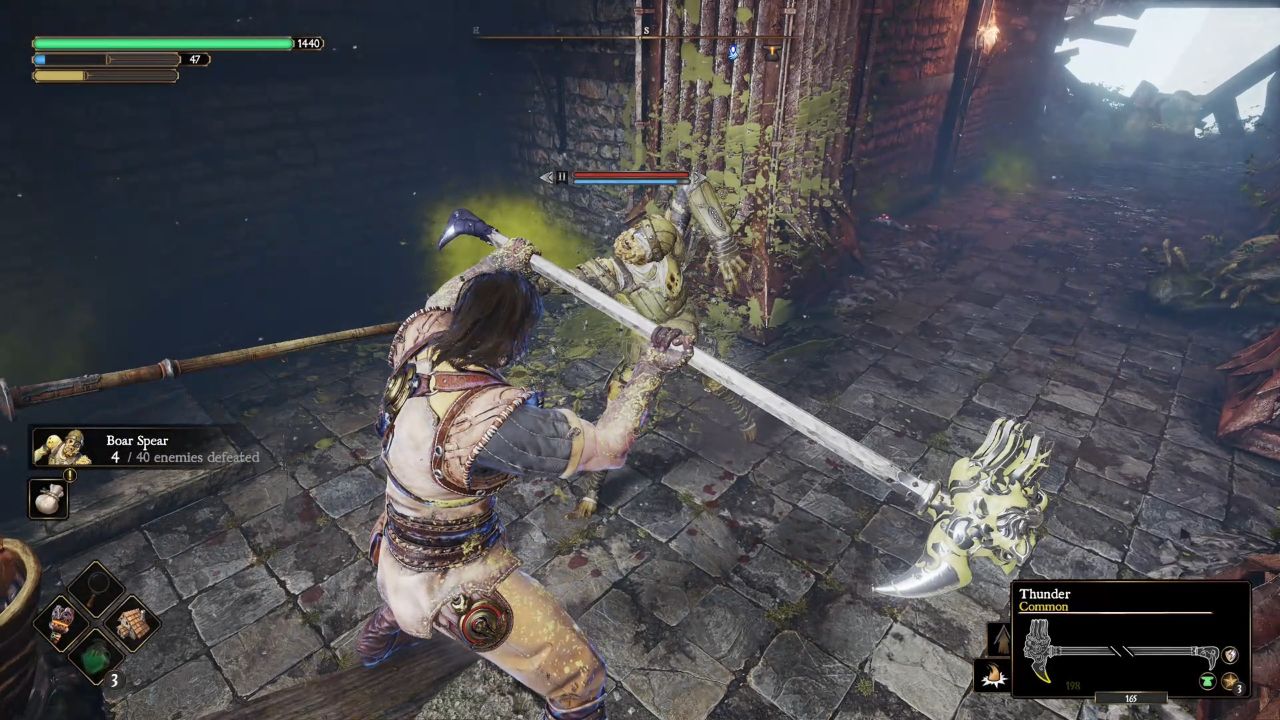
If you want to mark the next objective on the fairly useless map, you have to go into the options and enable it every single time. Without it, you have zero guidance. There’s not even a Quest log. If you’re a FromSoftware game you can get away with this, but Blades of Fire lacks that peerless area design. Often I found myself wandering around maps just looking for a hint or something I’d missed. I spent an hour in the Crimson Fort cursing the game and then found the way forward through a hidden gap in a wall behind some furniture. This simply shouldn’t happen for the critical path. Hide secrets by all means, but if you’re loftily refusing me an objective marker, at least make it feel intuitive.
I died more times falling off seemingly low ledges than in combat, since Aran de Lira can take a sword to the face and walk it off but apparently couldn’t flop down on his sofa too hard without breaking his spine. The combat itself is the saving grace, though. All four face buttons represent the angle of Aran’s swing, and locking onto an enemy will reveal which direction is currently unprotected and whether or not your current weapon can do any damage. Different enemies have weaknesses to different archetypes, which in itself is a bit weird. There’s no reason why a short sword should damage any enemy more than an axe-blade, but there you go. Combat does feel responsive and fun, as you block and parry enemy attacks to increase your damage or stagger them. Some weapons have two different stances, such as penetrating and slashing for swords, which affect how and where you can damage an enemy.
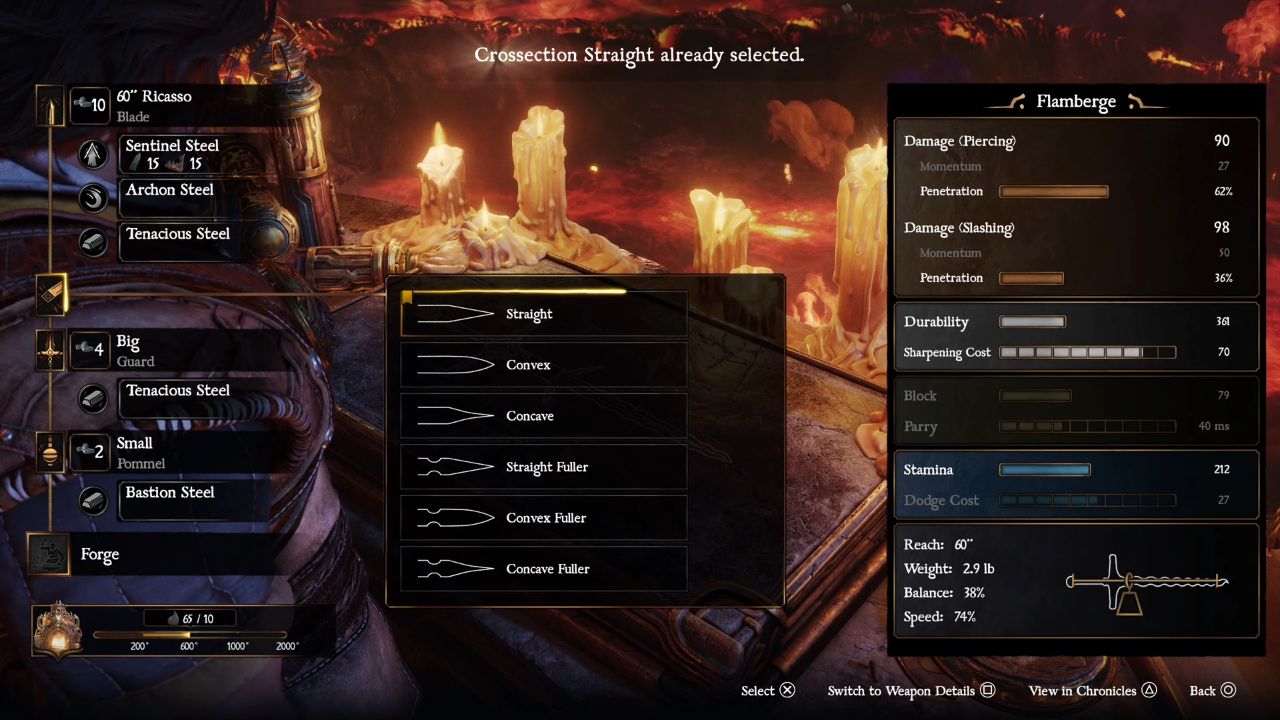
It can be annoying when fighting more than one enemy type at a time when they’re both weak to different weapons and stances, and have no AI beyond running at you together. In this case you’ll need to keep swapping weapons or stances, and constantly clicking the right stick to see the colour-coded weak spots as the helpful outline fades after a few seconds, and many enemies go through different phases with different weak points. The best fights are against Trolls, that will regenerate if you don’t stagger them with a heavy attack and then will keep fighting with limbs missing. You can even slice their face off and watch them swing madly around trying to catch you.
Blades of Fire also has an interesting mechanic for several of the larger bosses, whereby they’ll keep respawning or coming back throughout their areas until you finally defeat them. Often though you’ll have an annoying NPC with you. In the Crimson Fort it’s a character you need to escort and can be kidnapped, leading you to look high and low to free them. In the Doyen Graves it’s a doddering old ghost who takes an age to remember every significant thing and drags the pace to a slow crawl over and over again. For all the fun the combat can be, so much of the rest of Blades of Fire is incredibly long-winded.
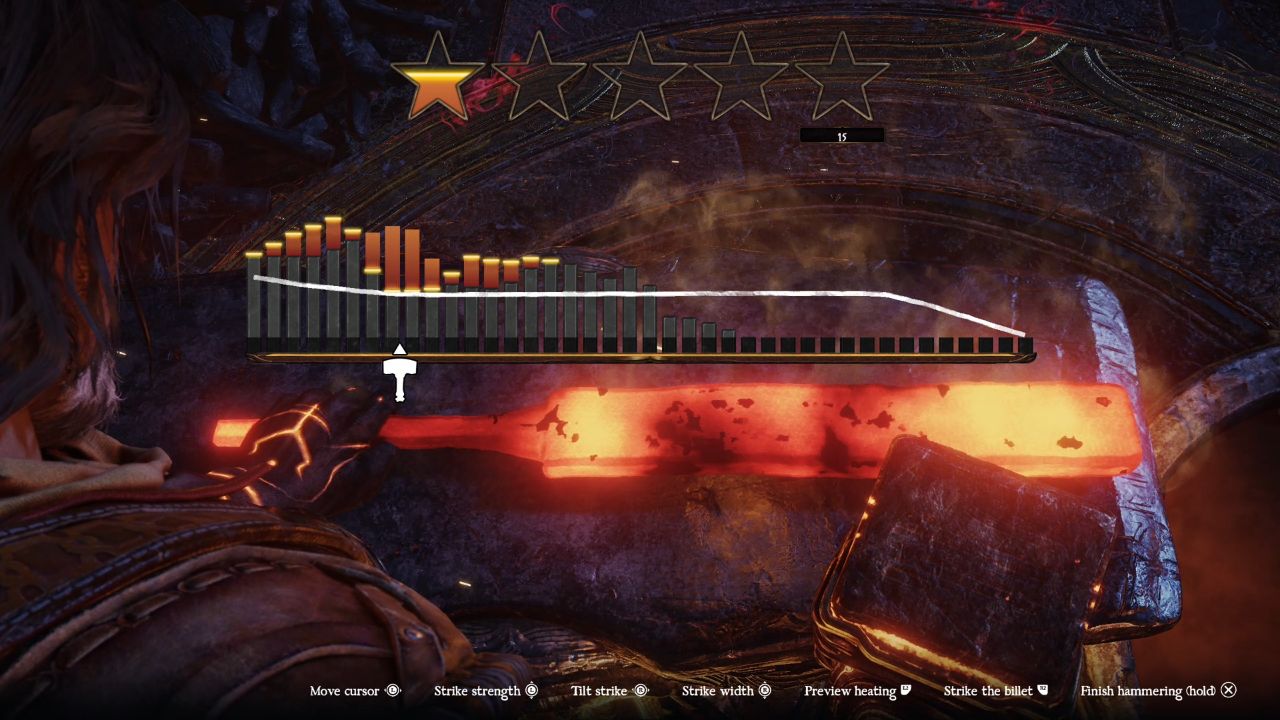
You will have plenty to find in each environment, though, and I can’t fault how full the game world feels. From petrified enemies that can only be freed by finding hidden crows to land on them, to uncovering special keys, or overcoming combat challenges and finding hidden chests, there’s always plenty to do. Each weapon can be imbued by a mysterious spirit with one of three runic powers that help change the environment, such as a Time power that allows you to repair damaged bridges. There’s a strong influence from the recent God of War games on display, although Blades of Fire struggles to match Kratos’ adventure in quality or scale.
The core mechanic besides combat, though, is forging. Because Aran can forge steel, you’ll find Anvils around that act as save points and fast travel points. You can also use them to access a magical Forge where you can craft weapons from numerous materials you gather, using patterns you’ll find at special statues or loot from certain enemies. These allow you to alter a multitude of factors while crafting, from the weapon’s reach and swing speed, to the weight, durability, block and parry strength, or of course damage. Each weapon is unique and can be named, but all will eventually break. The more you use them the more famous they’ll become, and you can eventually chop them in at an NPC in exchange for rare materials.
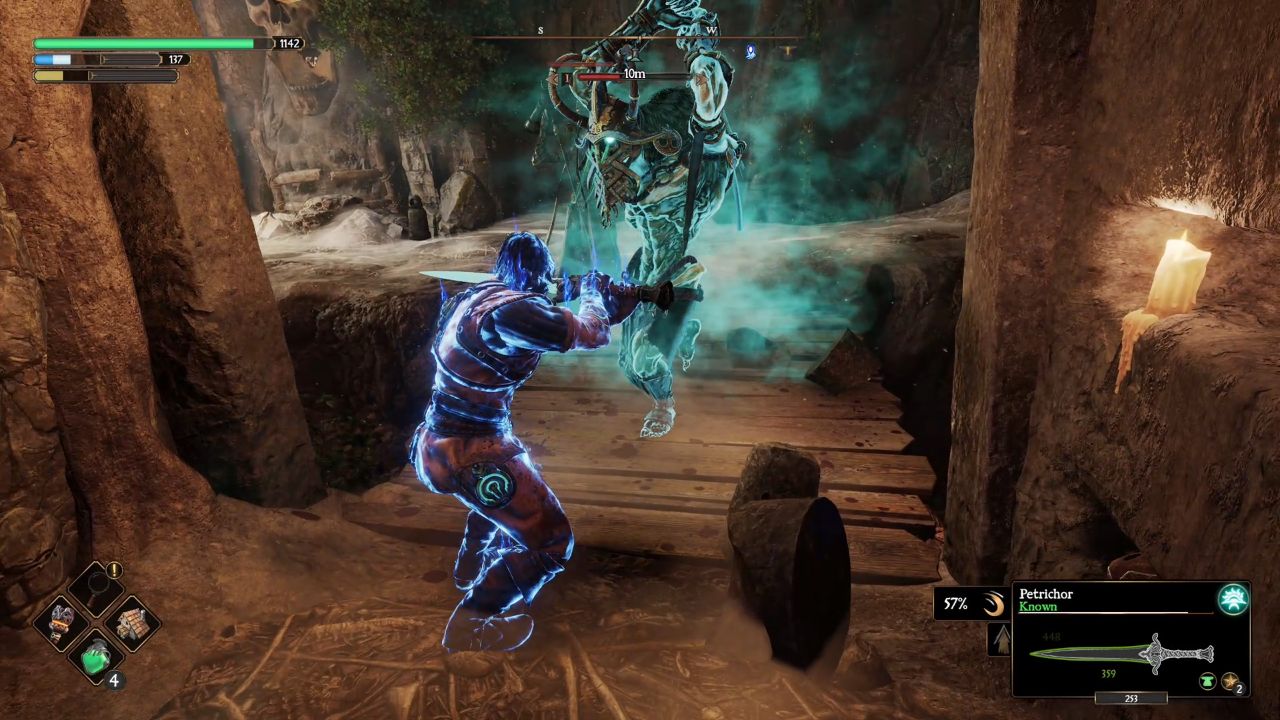
To repair them, you need to find an Anvil or use a whetstone, the latter of which is finite. To repair at an Anvil you’ll use up a Forge Star, which are applied to the weapon during crafting. The crafting is presented as a white line with various peaks and troughs, meant to show the shape of the metal you’re aiming for. You must adjust the strength, angle, and direction of your hammer strikes to try to match the metal to the white line, which sounds like it should be simple but is anything but. In fact, it’s downright frustrating more often than not. Sometimes you can endlessly tweak the blow and barely fill a Star, other times you can just take pot luck and fill one and a half. I found it incredibly fiddly and user-unfriendly, and even after forging twenty plus weapons could never get it right. Maybe that’s a “me” problem, but for such an important mechanic it’s frustratingly clumsy.
Blades of Fire’s massive arsenal is a bonus though, with multiple variations of swords, axes, sabres, greatswords, hammers, dagger, and spears. You can dual-wield hand axes or kukhris, and cycling through the four you have equipped is quick. Health refills are finite and must be refilled at save points, like in most games of this type, and are increased by finding rare Cryptek Scrolls hidden in chests around the world. You can also increase the number of available Forge Stars on certain weapons by finding green Crypteks.
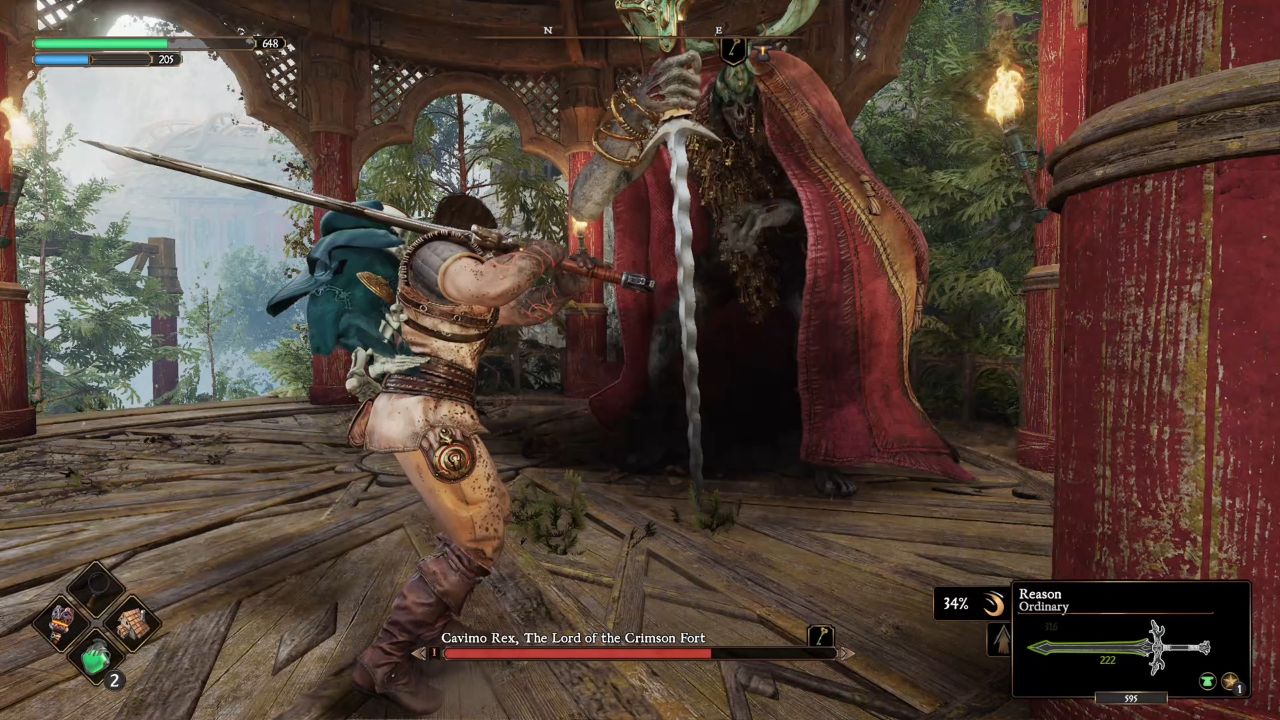
I really wanted to love Blades of Fire, and gave it more leeway than I would most games, but at every turn it seemed determined to fight me. From the awkward crafting that feels clunky and imprecise to the drawn out, tonally-imbalanced narrative (we go from NPCs getting bloodily murdered in cutscenes to Evil Dead references and fart humour without a shred of nuance), it’s a game that feels like it was made by three different studios in three different countries.
The weapon and enemy variety is solid, as is the base combat that can feel very satisfying most of the time, but it’s crying out for some exploration guidance and level design that makes more sense. As a Soulslike it struggles to find its balance and as a straight action adventure it repeatedly trips over its own complexities. Blades of Fire is by no means a bad game, and in fact has some elements that feel original and compelling, but it ultimately falls short of the bar set by other adventure games of recent years like Evil West or Stellar Blade and can’t quite seem to settle on an identity of its own.
